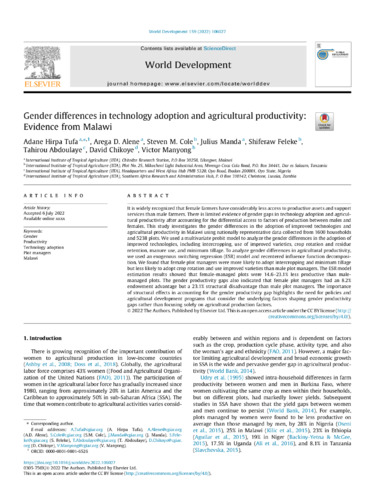Gender differences in technology adoption and agricultural productivity: evidence from Malawi
Abstract
It is widely recognized that female farmers have considerably less access to productive assets and support services than male farmers. There is limited evidence of gender gaps in technology adoption and agricultural productivity after accounting for the differential access to factors of production between males and females. This study investigates the gender differences in the adoption of improved technologies and agricultural productivity in Malawi using nationally representative data collected from 1600 households and 5238 plots. We used a multivariate probit model to analyze the gender differences in the adoption of improved technologies, including intercropping, use of improved varieties, crop rotation and residue retention, manure use, and minimum tillage. To analyze gender differences in agricultural productivity, we used an exogenous switching regression (ESR) model and recentered influence function decomposition. We found that female plot managers were more likely to adopt intercropping and minimum tillage but less likely to adopt crop rotation and use improved varieties than male plot managers. The ESR model estimation results showed that female-managed plots were 14.6–23.1% less productive than male-managed plots. The gender productivity gaps also indicated that female plot managers had an 8.2% endowment advantage but a 23.1% structural disadvantage than male plot managers. The importance of structural effects in accounting for the gender productivity gap highlights the need for policies and agricultural development programs that consider the underlying factors shaping gender productivity gaps rather than focusing solely on agricultural production factors.

